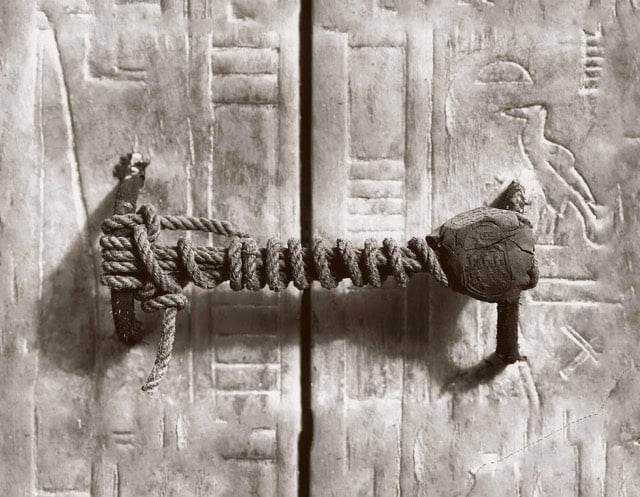Tutankhamun’s unbroken rope seal

This is the rope seal securing the doors of Tutankhamun’s tomb, unbroken for more than 3200 years until shortly after Harry Burton took this photo in 1923. A description from National Geographic:
Still intact in 1923 after 32 centuries, rope secures the doors to the second of four nested shrines in Tutankhamun’s burial chamber. The necropolis seal — depicting captives on their knees and Anubis, the jackal god of the dead — remains unbroken, a sign that Tut’s mummy lies undisturbed inside.
How did the rope last for so long? Rare Historical Photos explains:
Rope is one of the fundamental human technologies. Archaeologists have found two-ply ropes going back 28,000 years. Egyptians were the first documented civilization to use specialized tools to make rope. One key why the rope lasted so long wasn’t the rope itself, it was the aridity of the air in the desert. It dries out and preserves things. Another key is oxygen deprivation. Tombs are sealed to the outside. Bacteria can break things down as long as they have oxygen, but then they effectively suffocate. It’s not uncommon to find rope, wooden carvings, cloth, organic dyes, etc. in Egyptian pyramids and tombs that wouldn’t have survived elsewhere in the world.





Stay Connected